We saw a whale literally within 5 minutes of being in the water.
MartiniDoz
Search
Cart
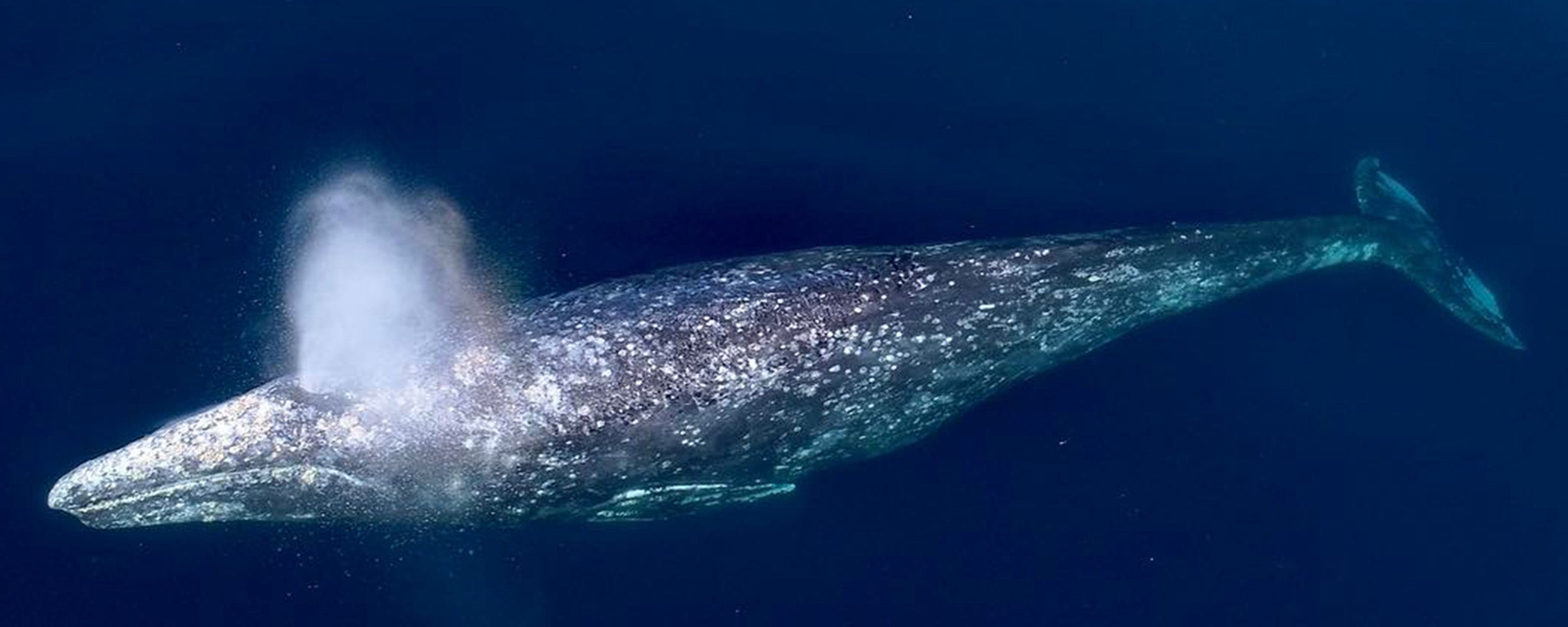
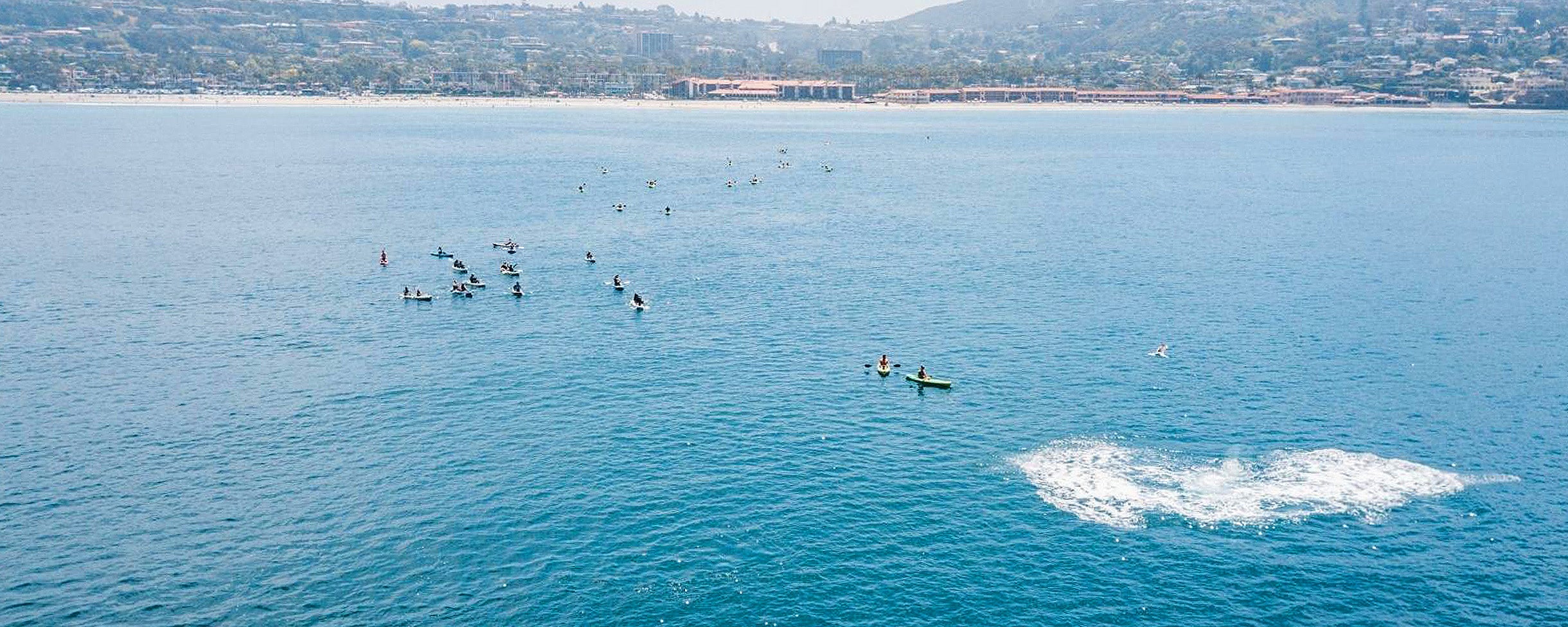
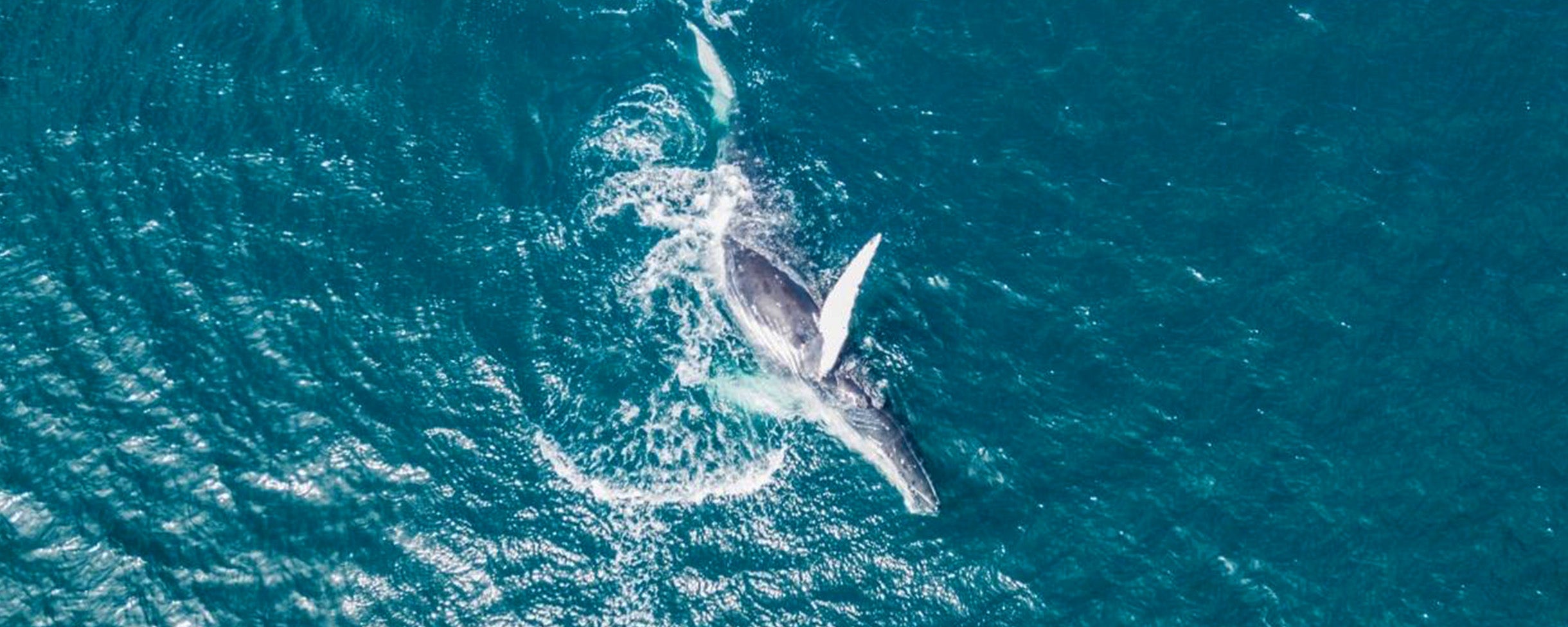
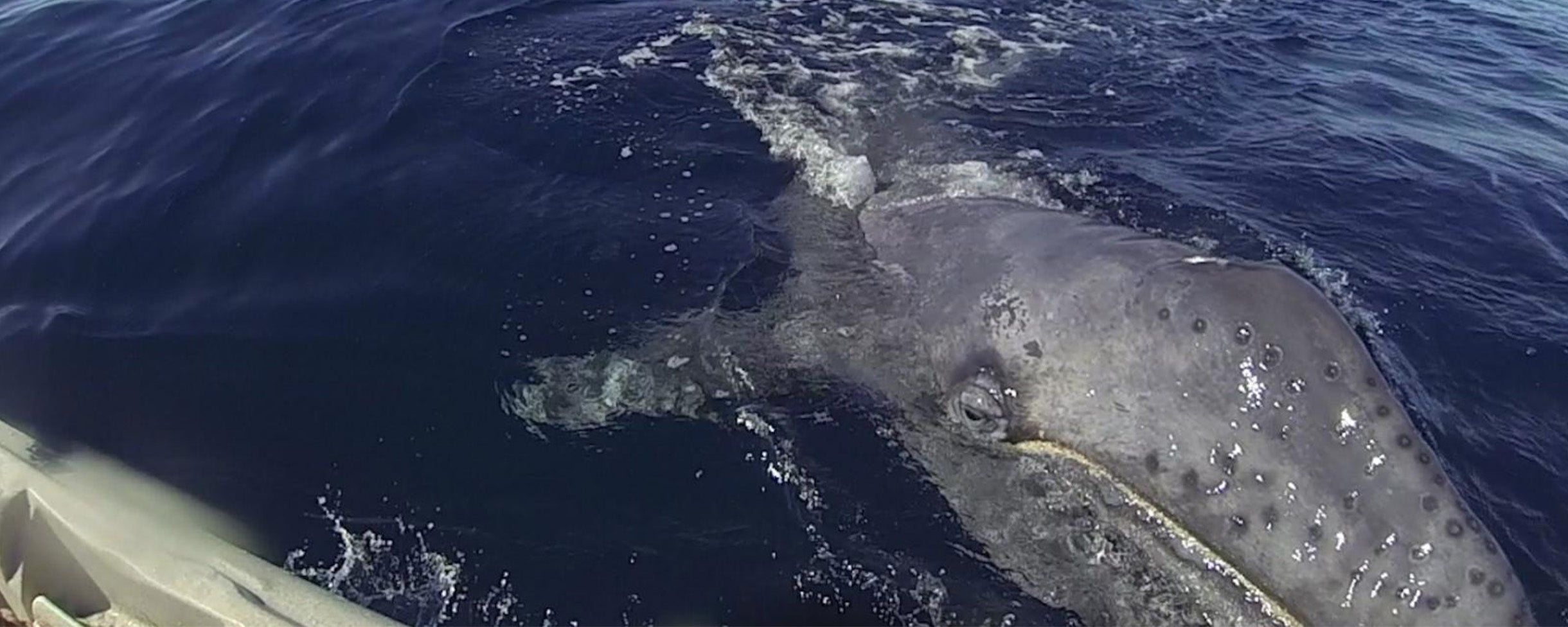
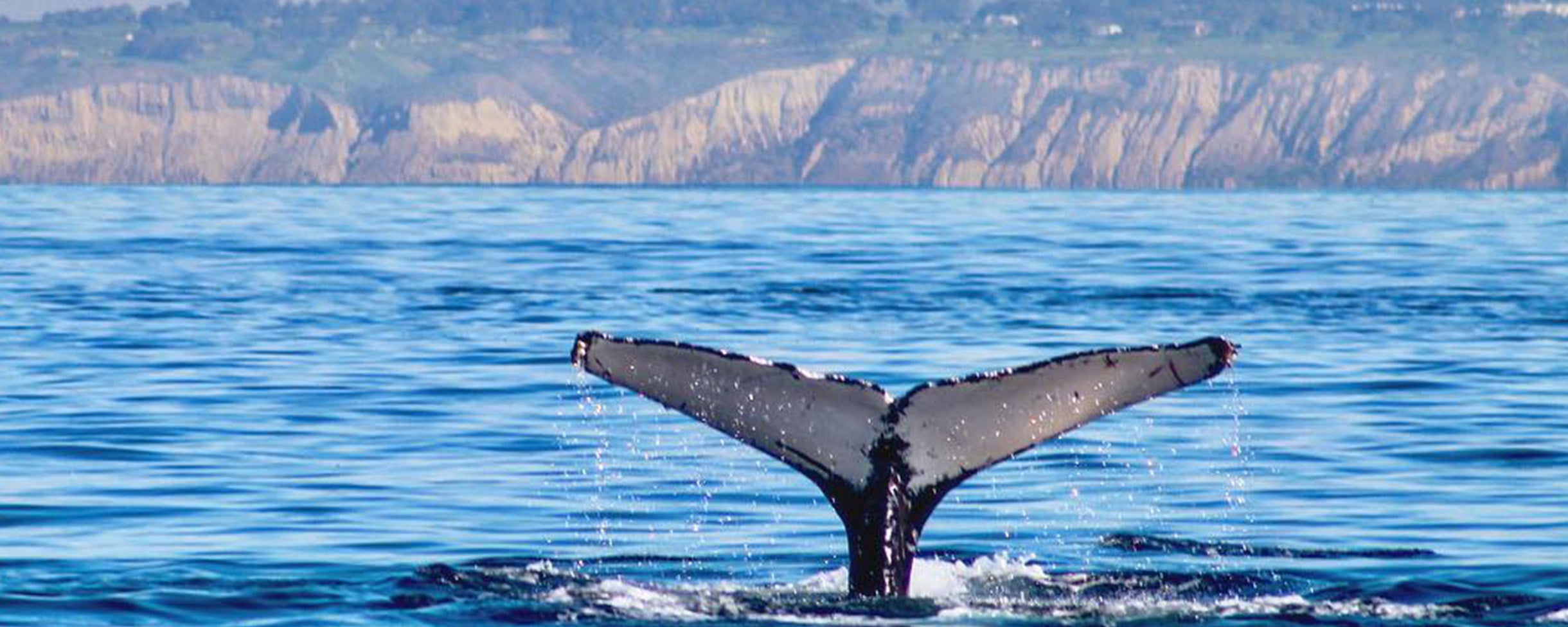
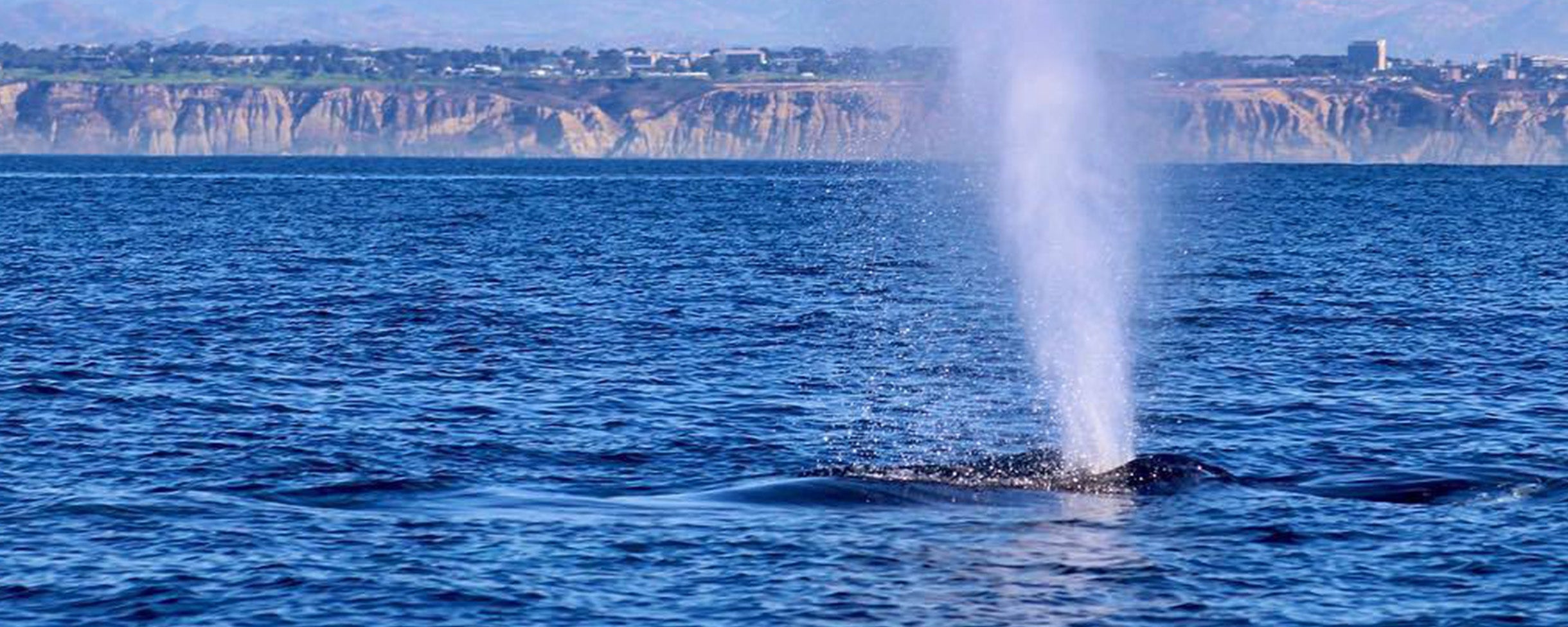
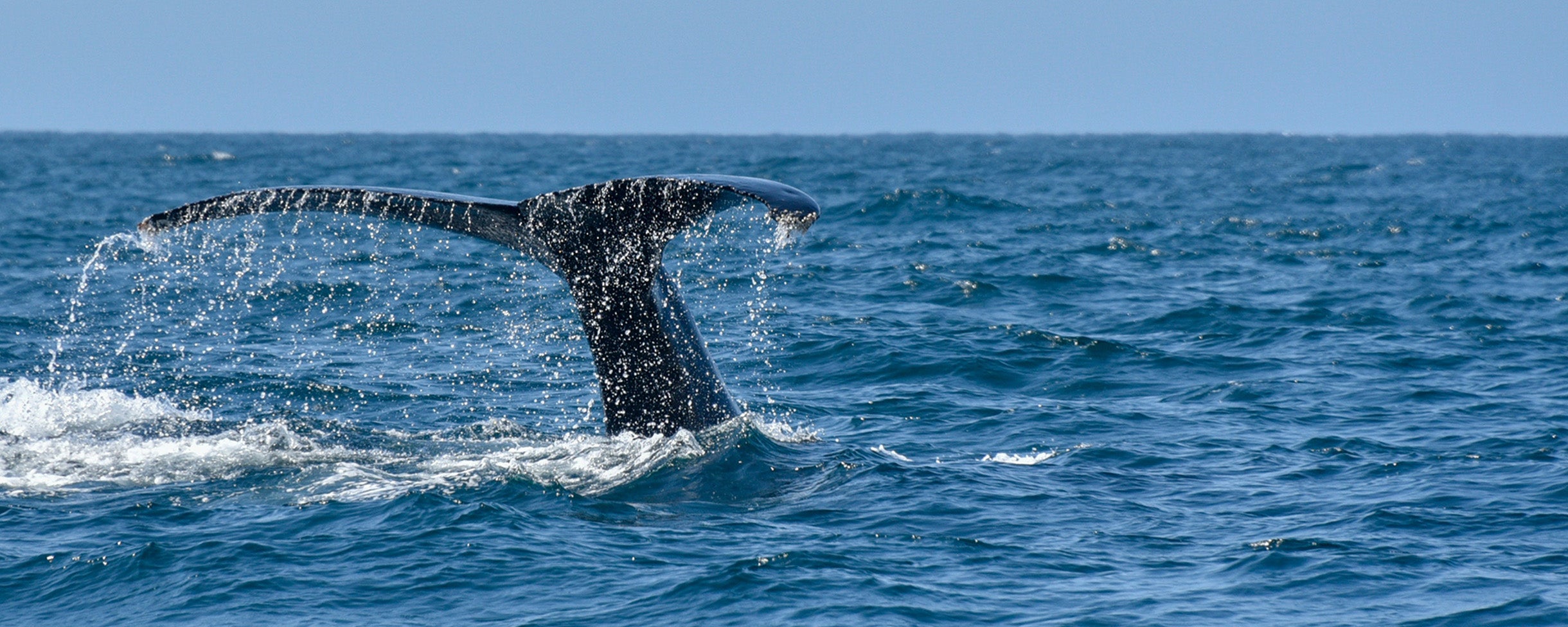
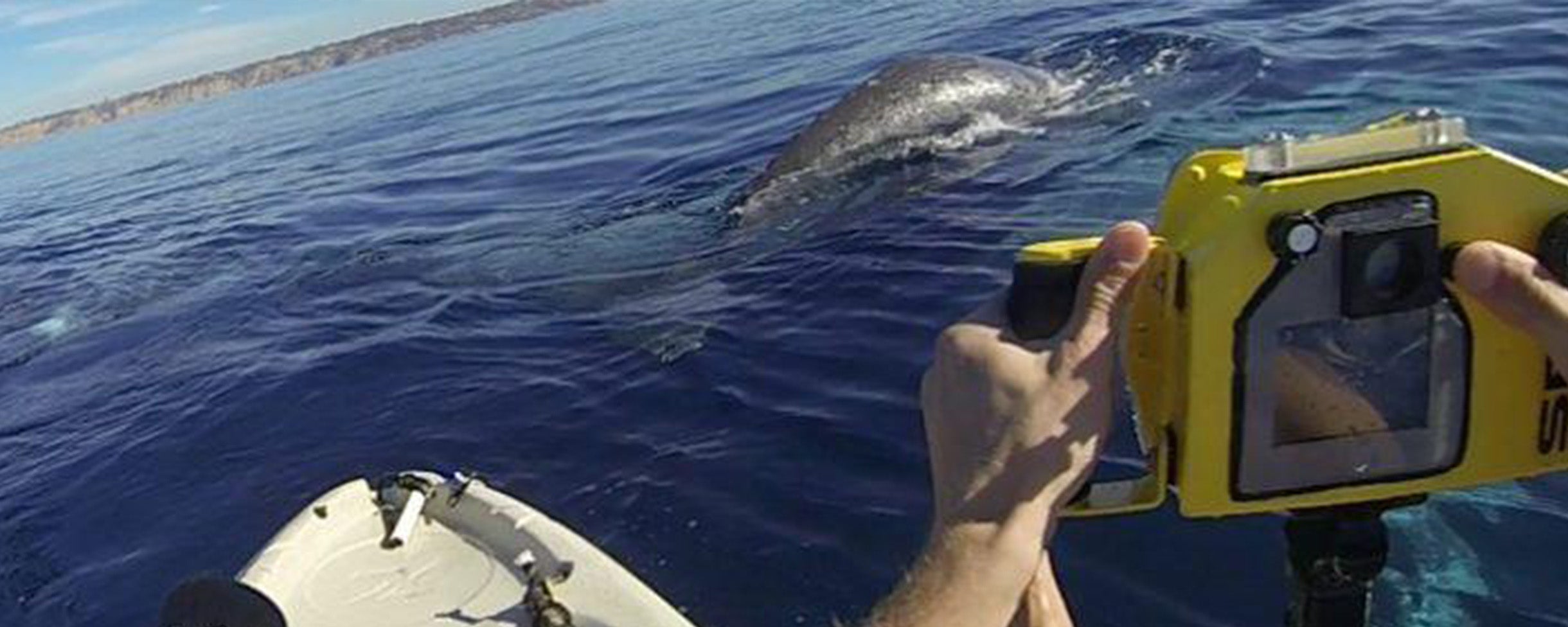
Grey Whales begin their annual migration from the coast of Alaska in October, bringing them past the beautiful shores of La Jolla, San Diego from the end of November until the beginning of March. Join us for a chance to have an incredibly intimate experience with some of the most majestic mammals on the planet!
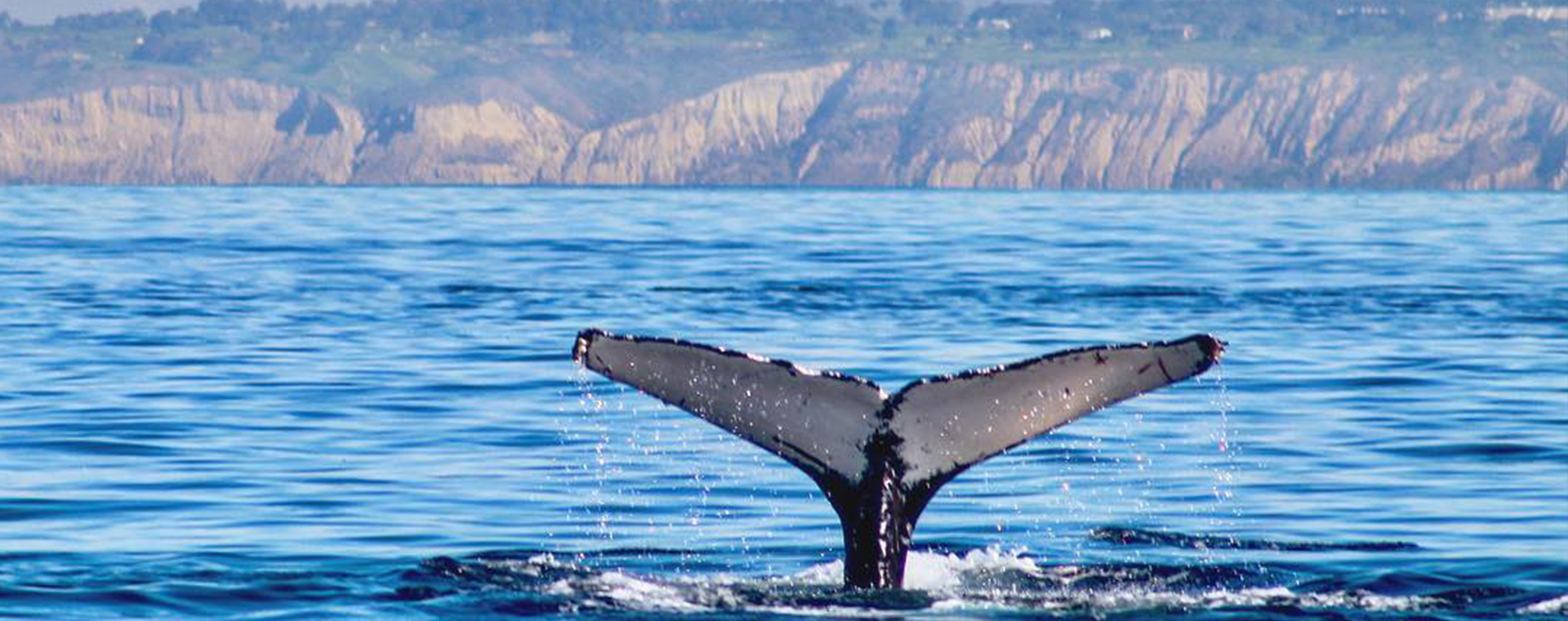
Experience the grey whale migration from the seat of a kayak! Leaving the waters of the Arctic and heading south to the lagoons of Mexico, gray whales naturally migrate past San Diego during the winter. This is a non-polluting, non-threatening, and intimate way to experience one of the most majestic mammals on the planet.
Your guides will lead the group about two miles out from shore, where you’ll stop at the best spots to view gray whales. Along the way you’ll learn interesting facts and history about the whales, other marine life, and the La Jolla Ecological Reserve. Keep in mind gray whales are wild animals. We see a large number of them during the season but cannot guarantee a sighting, although we often see dolphins, sea lions, harbor seals, and other marine life as well!
When: December 4th to March 6th depending on sightings
Duration: 2 Hours
Start Times: Throughout the Day
Meeting Place: Everyday California Shop. 2261 Avenida de la Playa, La Jolla, CA 92037
Price: Starting at $94 per single, and $119 per double
Group Size: 20 Person Max
Ages: 5+ for a tandem kayak (with an adult), 15+ for a single kayak
Weight Limit: 300lbs for a Single Kayak, 425lbs for a Double Kayak
Available from December 15th to March 6th
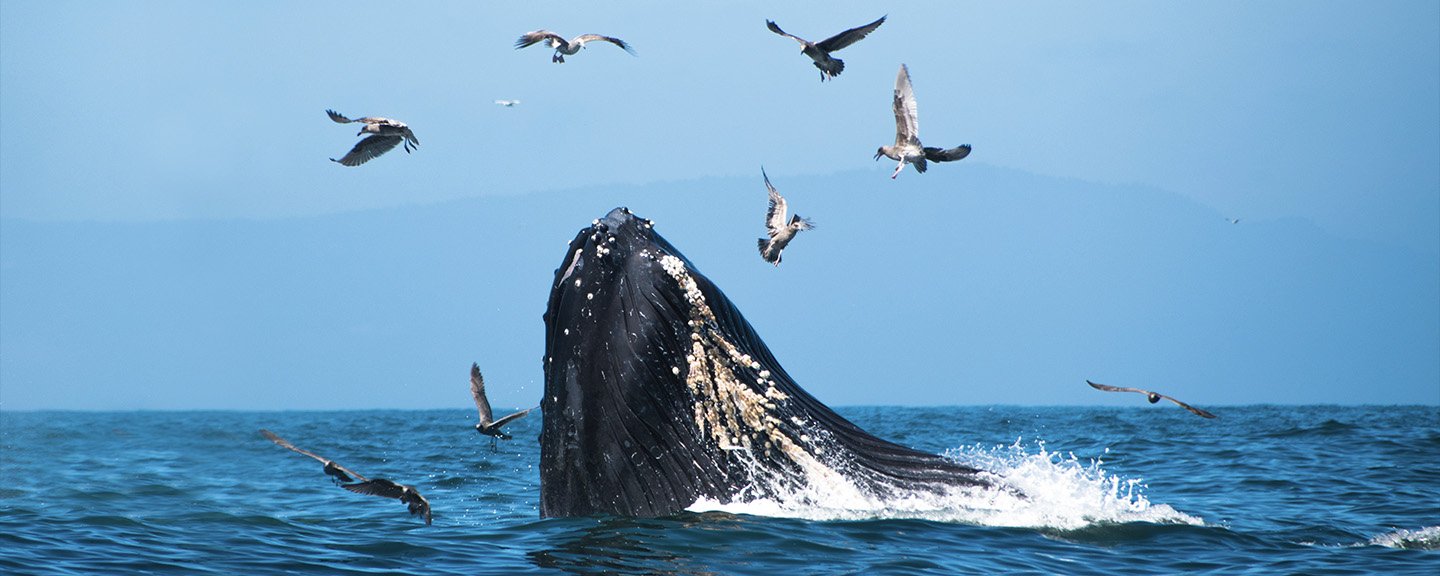
Gray whales spend much of the year in the cold waters near Alaska, but every fall they begin what is thought to be the longest migration of any animal. After a month and a half of swimming, they arrive in the coastal lagoons of Mexico to mate and give birth to their young. Gray whales begin to reach Southern California in the winter, and they can be seen from any part of the West Coast, particularly on areas of land that extend out into the water. But if you’re looking here, you’ve probably realized that the best (and most eco-friendly) way to view the migration is up close and personal in a kayak.
Gray whales are the 9th largest animal on the planet. The females, which are a bit larger than the males, can grow up to 45 tons, which is about as much mass as 650 humans put together (or 1.9 million hamsters, which isn’t a useful comparison, but it's a fun mental image). They typically reach 40 feet in length when fully grown, but individuals as long as 49 feet have been recorded.
Gray whales are baleen whales, which means that instead of teeth, they have plates with thousands of bristle-like structures made of keratin, the same substance found in human hair and nails. These bristles, called baleen, act as a filter to trap small organisms like plankton and krill when the whale is feeding.
These whales get their name from their dark gray skin. Newborn calves are a solid, dark, almost black color, but over the course of the whales lives, their skin will become mottled with light gray and white patches from scars and barnacles. Genetic variations do occur, such as in an albino gray whale spotted in Mexico earlier this year. This whale is part of the population of gray whales that migrate from Alaska to Mexico annually, so be on the lookout for a pure white whale when they swim past San Diego this winter!
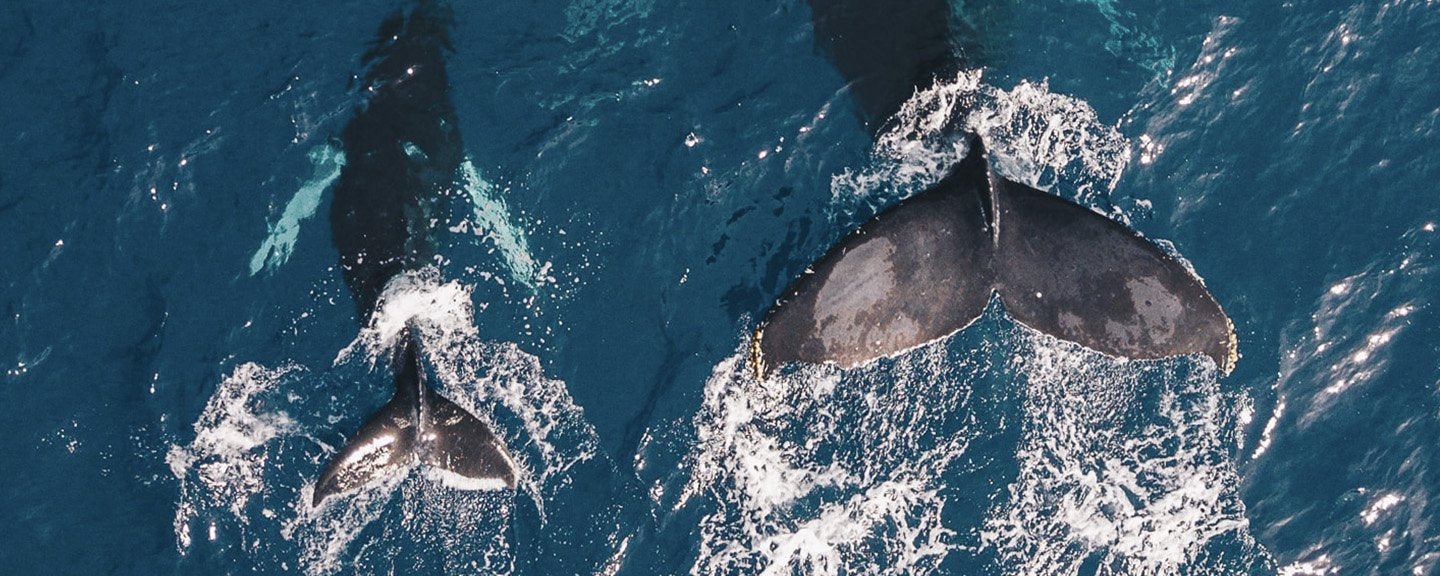
Gray whales live most of their lives in the cold waters near Alaska, where they spend much of their days suction feeding in shallow waters. When gray whales eat, they will first dive to the sea floor and roll on their sides to stir up the sediment. Interestingly, gray whales have an individual preference for which side they roll onto. Most of them are “right-handed”, but like humans, some of them are “left-handed”. When the water around them is turned into a muddy slurry, they pull back their huge tongues and expand their throats, which creates a powerful suction that fills their mouths with a mixture of water, mud, and small crustaceans. Once their mouths are full, they will close their jaws and force the water and mud out through the baleen, trapping the crustaceans which are then swallowed. They then return to the surface to breathe, and repeat the whole process over and over. Gray whales have also been known to feed on schools of krill closer to the surface of the ocean, and in total eat up to 2,400 lbs of food each day.
We don’t know much about how they sleep in the wild, but we do have some information from a gray whale that was briefly kept in captivity while it recovered after a rescue. The whale was observed to sleep both on the surface and at the bottom of the pool. Sometimes, it would sleep with only one eye closed, which tells us that half of its brain was still active. Occasionally, the whale’s body would jerk while it was asleep. This tells us that they, like humans, probably dream.
But we don’t really know how similar their minds are to humans other than that we both dream. We guage animal intelligence in part through their interactions with other animals, such as cooperation and communication. But adult gray whales don’t rely on each other for survival nearly as much as some other species, so an intelligence level is difficult to determine.
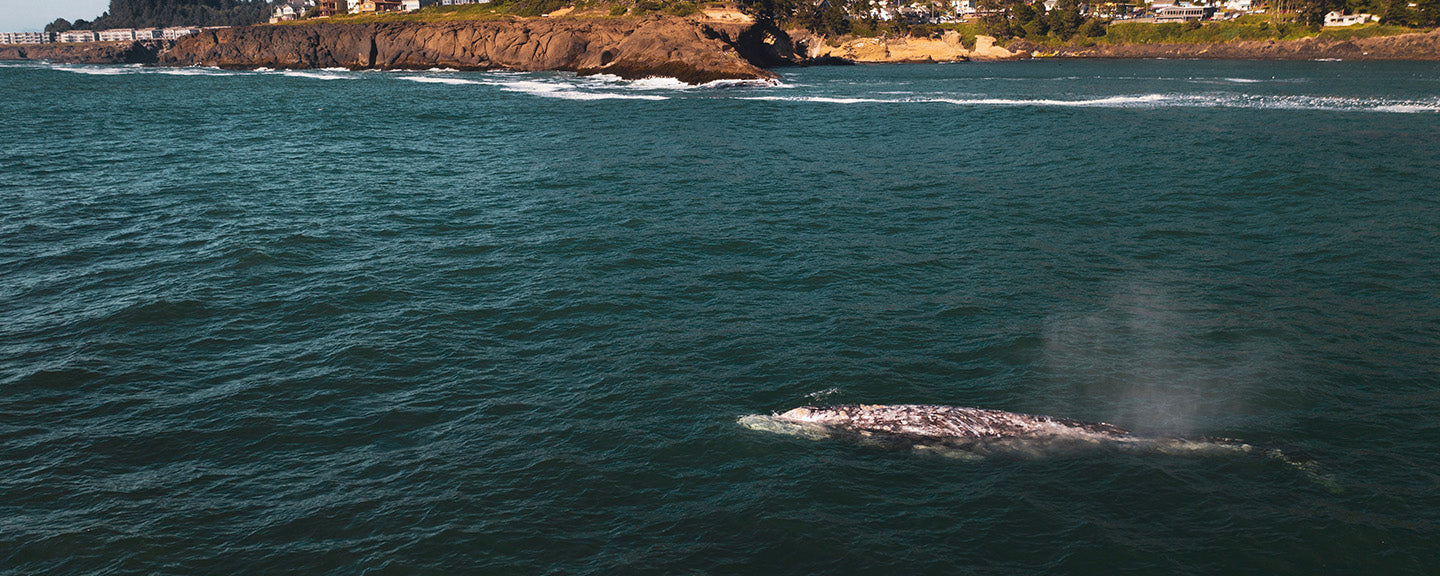
For most of recorded human history, meetings between humans and gray whales have almost always been in the context of hunting. Indiginous groups have been hunting them for millenia, and by the second half of the 19th century, worldwide industrialized whaling was targeting gray whales for their blubber (used to make oil) and their baleen (used in consumer products like corsets).
Because gray whales stay close to the coast in shallow waters, they were easy targets for whalers, and the entire species was on the verge of extinction. Thankfully, gray whales have been protected in the United States since 1936, and the International Whaling Commission has banned hunting them since 1949, so the species was able to survive. Unfortunately, it was too late for the North Atlantic population of gray whales, which were hunted to extinction. The Western Pacific population near Japan fared a little better, but with an estimated population of under 150, they still need our help. But there’s good news! The Eastern Pacific population has gone through an incredible recovery and now has more than 20,000 whales.
For a long time, gray whales had a reputation as being a dangerously violent animal. They were known to ferociously attack whaling boats by overturning them, smashing them to pieces, and drowning the sailors, which gave rise to their nickname “Devil Fish”. But since the decline of whaling, their relationship with humans has undergone a stark transformation. Today, gray whales are considered to be among the friendliest of all sea animals. They frequently approach whale watching boats (especially here in San Diego) for a closer look, and sometimes even allow people to touch them (but here at Everyday California, we follow NOAA guidelines, which say you should never touch a gray whale, even if it approaches you). It turns out that, like most humans, gray whales are wonderful animals to be around, unless you’re hurting them. Such a crazy concept, right?
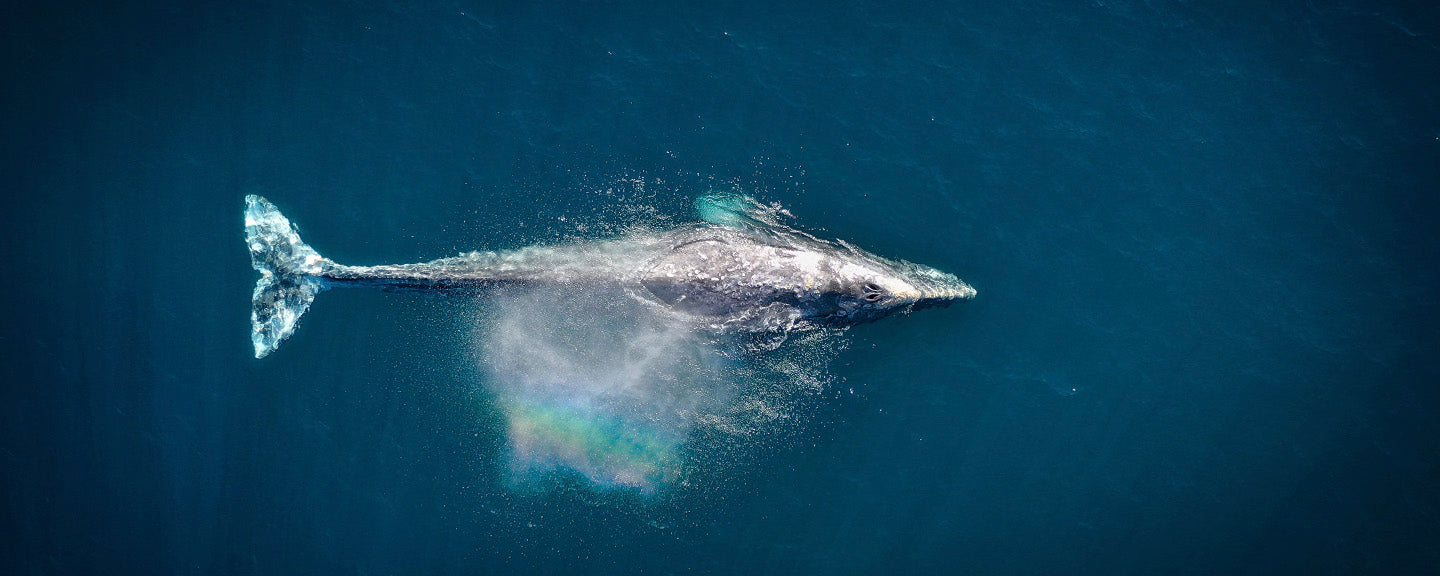
Each year beginning in October, the Eastern Pacific population begins a migration from Alaska to the warm coastal lagoons of Mexico. This trip of more than 6,000 miles in each direction is the longest distance migration known to humans. To put it in perspective, if you drove from the southwest corner of California to the northeast corner of Maine, you would have covered about a fourth of their total migration distance. For our European friends, it’s a little longer than a round-trip drive from Lisbon, Portugal to Karachi, Pakistan. The migration serves two purposes: giving gray whales a suitable place to birth their calves, and providing an area to congregate for mating.
Newborn gray whales must spend the first few months of their lives in warm water. Gray whale calves are born without a blubber layer to keep them warm, so they would quickly freeze to death in the northern feeding grounds. Calves nurse for about 6 months, drinking about 50 gallons of milk and gaining 60 lbs each day to develop the lifesaving blubber layer. Blubber is also essential for whales to maintain buoyancy, so the mother must assist the calf until it is able to swim to the surface on its own. The coastal lagoons help again by having a much higher salinity (amount of salt) than the open ocean, which makes the water more dense and easier to float on.
The destination is also the perfect location for breeding, so when single male and female gray whales arrive in Mexico, they begin their mating rituals. Gray whales have a complex courtship process that usually involves three or more whales. While the two whales are mating, the less dominant male holds the female in place so that she doesn’t float away. Bottlenose dolphins commonly gather around mating gray whales. Scientists aren’t quite sure why they are drawn to the spectacle, but they theorize that dolphins just like to watch. Seriously.
After mating, the whales begin to leave Mexico and begin the return trip to the seas near Alaska. The mothers with newborn babies will stay for a few months and return when the calves are strong enough for the long journey.
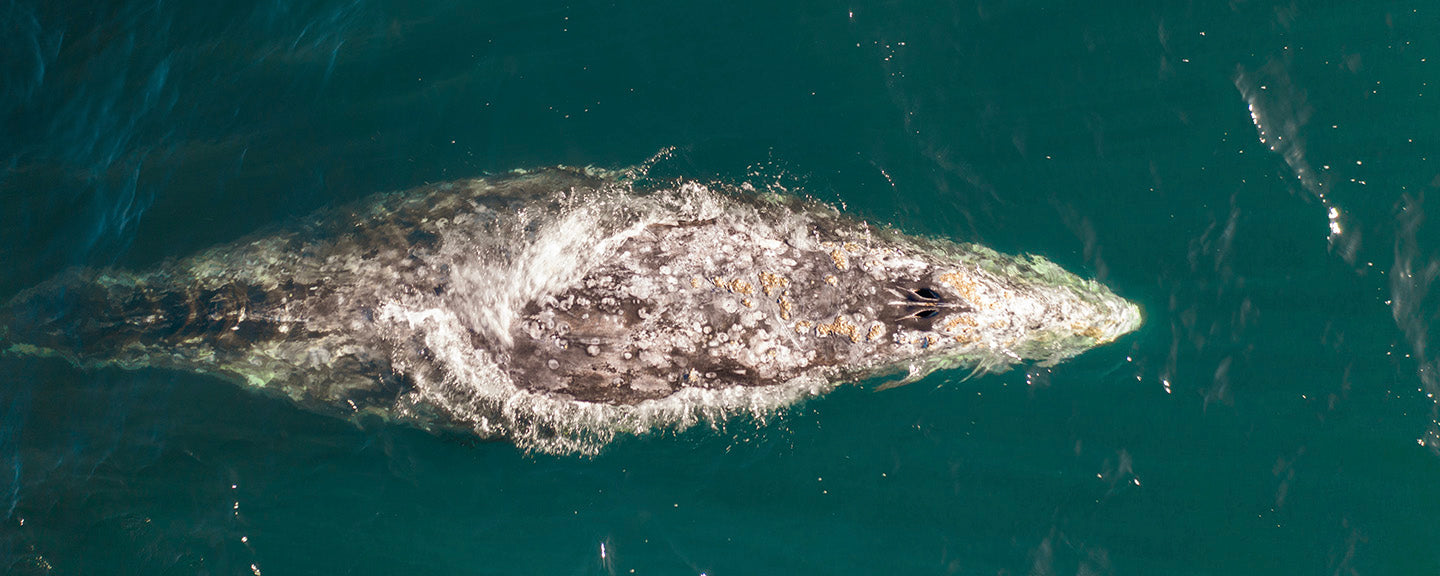
Even though the species has been recovering since the mid-20th century, gray whales do still face significant threats. The species as a whole has been removed from the endangered species list, but the small Western Pacific population is still endangered.
They may be much safer from hunting, but we’ve introduced a multitude of new challenges to their survival. Like all of the animals in the ocean, they are threatened by climate change, which is disrupting food chains worldwide. Pollution is also a significant threat. Because gray whales stay close to the coast, they are particularly susceptible to effects from chemical runoff that enters the ocean from land. Noise pollution is also a major concern, and studies have shown that gray whales are unable to communicate at all when there is too much noise from ships, drills, and other industrial activity on the water. They can also inadvertently be killed by ship strikes or drown after they’re caught in fishing nets.
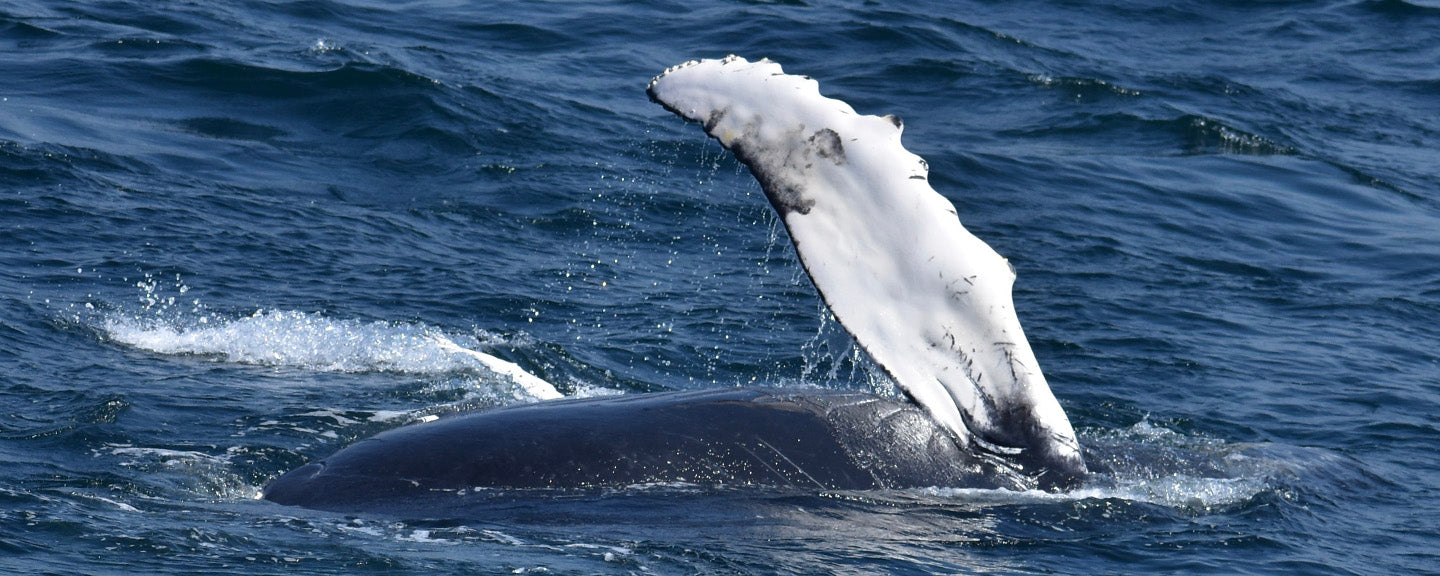
The good news is that we can help by following sustainable practices that will not only help protect the whales, but will also improve the lives of any animal that depends on a healthy ocean (hint: that includes humans. More than half of our oxygen comes from the ocean). We’ve put together a few resources below as a starting point to learn about helping the planet with sustainable practices, and we hope you can start incorporating them into your life.
Monterey Bay Aquarium’s Seafood Watch
The famous nonprofit aquarium has developed a seafood guide to help consumers pick ocean-friendly seafood, caught or farmed in a sustainable manner. Guides are available as a printable document or app.
Why it matters: Irresponsible fishing practices threaten vulnerable species. Animals, including gray whales, are often killed as bycatch from these fishing operations.
WWF’s Ten Tips to Reduce Your Plastic Footprint
The World Wildlife Fund for Nature explains some easy methods to reduce plastic use and waste.
Why it matters: Plastic tends to find its way into the ocean, where it is broken down into microscopic pieces that accumulate on every step of the food chain. When it doesn’t break down, it sinks to the sea floor, where it is swallowed whole by suction feeding gray whales.
Earth Institute’s 35 Easiest Ways to Reduce Your Carbon Footprint
Columbia University’s Earth Institute explains simple steps you can take to reduce the amount of greenhouse gasses we produce.
Why it matters: As greenhouse gas levels increase, the ocean is becoming warmer and more acidic, so marine animals will be less able to survive and thrive. Much of our carbon footprint comes from burning fossil fuels, which pollute the ocean with noise and toxic waste.
EPA’s 10 Things You Can Do to Prevent Stormwater Runoff Pollution
The Environmental Protection Agency released this short guide on how to prevent excess water from flowing into drains.
Why it matters: Pesticides, oils, and other hazardous waste is carried by the water into storm drains, which eventually lead to the ocean. Gray whales stay next to the coast where the pollutants are entering the water, so runoff can be a significant danger to them.